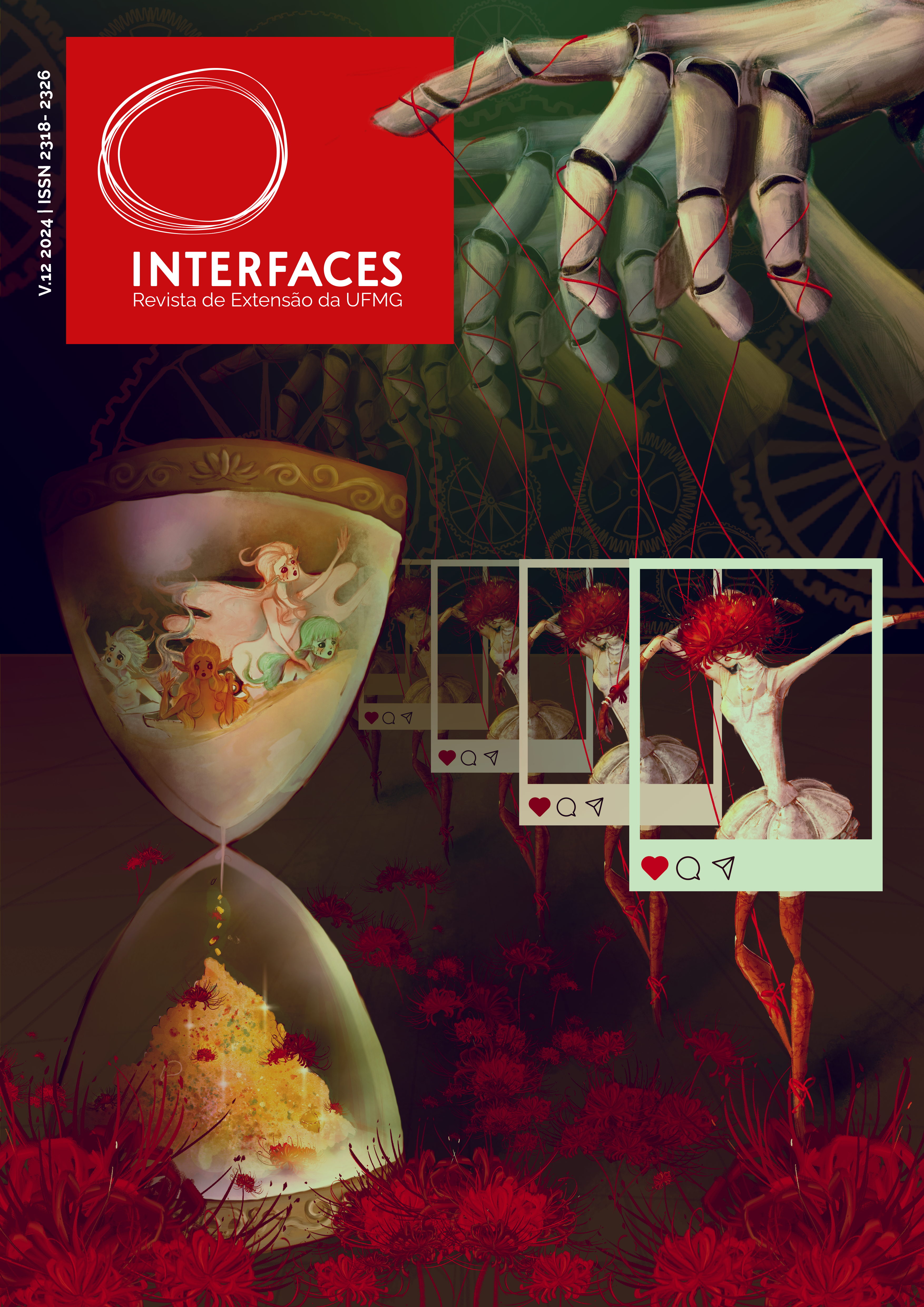REMOTE RECEPTION AT FAO-UFMG: USE OF DIGITAL TECHNOLOGIES AS AN AUXILIARY TOOL IN DENTAL CARE
DOI:
https://doi.org/10.35699/2318-2326.2024.42013Keywords:
Acolhimento, COVID-19, ExtensãoAbstract
The National Humanization Policy (PNH) was created in 2003 with the aim of offering society quality care in all fields of health. The extension project “Welcoming and Orientation to the User of the Faculty of Dentistry at UFMG” was created in August 2017 with the aim of welcoming, in a humane way, users who sought clinical care at the faculty. In order to adapt to the changes imposed on clinical practice due to the pandemic context, in August 2020 the Remote Reception was created. The present study intends to report and describe the implementation of Remote Reception, a tool that was necessary to adapt activities to the scenario of coping with COVID-19. Created with the aim of maintaining a dialogical relationship with society during the pandemic, offering the population a guidance service during the interruption of face-to-face activities, this communication channel proved to be valid even with the return of face-to-face clinical consultations. Considering that humanization is an increasingly recurrent theme in the daily life of health services, the incorporation of new information and communication technology tools into the work process becomes fundamental.
References
Carrer, F. C. A. et al. Teleodontologia e SUS: uma importante ferramenta para a retomada da Atenção Primária à Saúde no contexto da pandemia de COVID-19. Pesqui Bras Odontopediatria Clin Integr, 3(1), 12-35.
Coutinho LRP, Barbieri AR, Santos MLM. (2015). Acolhimento na Atenção Primária à Saúde: revisão integrativa. Saúde Debate, 39(105), 514-524.
Colegiado de Graduação [internet]. Projeto Pedagógico do Curso de Odontologia da FO-UFMG. Belo Horizonte, 2002.
Costa, E. D., Brasil, D. M., Santaella, G. M., et al. (2021). Digital technology in dental education during COVID-19 pandemic: worldwide experience of professors and students. Odovtos International Journal of Dental Sciences, 23(3), 179-208.
Disciatti JAC, Costa SC, Carvalho MCF, et al. (2021). CPOver: há uma década devolvendo sorrisos e qualidade de vida. Interfaces - Revista de Extensão da UFMG, 9(2), 01-468.
Franco, T. B., Bueno, W. S., Merhy, E. E. (1999). O acolhimento e os processos de trabalho em saúde: o caso de Betim, Minas Gerais, Brasil. Cad Saúde Pública, 15(2), 345-353.
Ghai, S. (2020). Teledentistry during COVID-19 pandemic. Clinical Research & Reviews, 14(5), 933-935.
Ministério da Saúde: Acolhimento nas práticas de produção de saúde. 2º ed. Brasília; 2008.
Takemoto, M. L. S., Silva, E. M. (2007). Acolhimento e transformações no processo de trabalho de enfermagem em unidades básicas de saúde de Campinas, São Paulo, Brasil. Cad Saúde Pública, 23(2), 331-340.
Teixeira, G. N. C. et al. (2018). Panorama situacional da Teleodontologia no mundo: uma revisão integrativa. Rev. ABENO, 18(3), 24-34.
Telles-Araujo, G. T., Caminha, R., Kallás, M. S., et al. (2020). Teledentistry support in COVID-19 oral care. Clinics, 75(1), 2030-2035.


